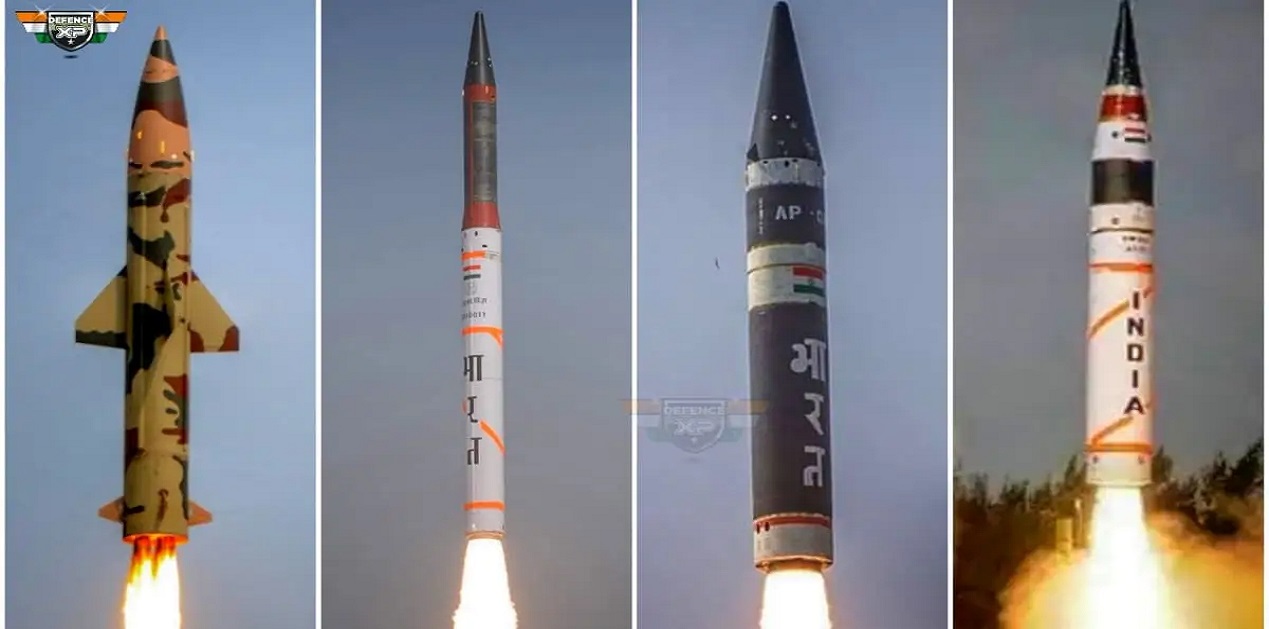“Sorry to keep you waiting. I’m here! Dongfeng Express at your service!” is what Peoples Liberation Army Rocket Force (PLARF) wrote in February 2019, in its first post on Sina Weibo, the Chinese Twitter. PLARF took the name “Dongfeng Express,” as a nickname in support of its Dongfeng ballistic missile series, which range from short-range missiles like the DF-11 to intercontinental ones like the DF-26. PLA Rocket Force (PLARF) evolved from a small, unsophisticated force of short-ranged and vulnerable ballistic missiles to an increasingly large and modern force with a wide array of both nuclear and conventional weapons platforms.
Following its christening, it has added 13 new brigades, as well as more important weapons systems such as the DF-21D anti-ship ballistic missile, the longer range and more capable DF-41 road-mobile ICBM, the dual nuclear-conventional DF-26 IRBM, and the DF-17 hypersonic glide vehicle (HGV). The unprecedented expansion from 29 to 39 brigades represented a more than 33% increase in size in only three years. This was followed by an apparent massive expansion of the PLARF’s silo-based ICBM force in 2021. The conventional arm of the PLARF is the largest ground-based missile force in the world, with over 2,400 conventionally armed ballistic and cruise missiles and about ninety ICBMs, in approximately forty missile brigades.
China’s new military construct known as Multi-Domain Precision Warfare aims at aligning its forces from cyber to space. Its core operational concept relies on interlinked command and control, communications, computers, intelligence, surveillance and reconnaissance to quickly coordinate firepower. The systems destruction warfare as the next way of war identifies key vulnerabilities in an adversary’s operational system and then launch precision strikes against those vulnerabilities, which could be kinetic or non-kinetic. Warfare is no longer solely focussed on the destruction of enemy forces; rather, it is won by disrupting, crippling or outright destroying networks and infrastructure by dominating networks and bombarding targets from a number of locations with a mix of weaponry. The PLARF fulfils several missions, including strategic deterrence, suppression of enemy air defences, and not allowing any inimical force access to Chinese space - land, air, or sea, and deny the enemy any space to fight a battle near the Chinese territory. China’s leadership has attached great importance to the role of conventional land-based missile capabilities for both deterrence and war fighting.
Deterrence, that is avoidance of wars, is the foundation of Indian defence strategy. Deterrence is a psychological mind game that dissuades the adversaries from pursuing proscribed actions and unwanted threats, by influencing the costs, benefits, and risks associated with war. It becomes necessary to understand how the Chinese leadership would calculate cost, benefit and risk, and strategic military balance. Deterrence is achieved by military power and national/ strategic resolve. In this process, need would be to net-assess military power, which is integration of operational concepts, technology and capabilities. In this context, failures of deterrence and anticipating escalation dominance to control conflict intensity or geographic spread are risky strategic choices.
It is apparent that significant shift is taking place in the conventional deterrence dynamic, and any sign of weakness will invite coercion, expansionism and may be even war. In India, war-avoidance by deterrence is central to preserving the national security and is the primary strategy. Though outside the purview of this paper, a well-conceptualised correlation between this given strategy and defence budget and the military power/ capabilities is imperative. Crafting and executing effective national deterrence strategies to today’s and tomorrow’s realities will remain germane to defence planning.
The US newly-coined “integrated deterrence in partnership with our friends,” is yet a far-cry! India requires her own independent credible conventional deterrent capabilities. Though conventional war has not taken place in recent times, the conditions have been far from perfect to halt expansionist/ revanchist policies (or salami-slicing as is euphemistically called) by one adversary, and disallow constant support to terrorism by the other. Recent decades find military competition expanding in the relatively new domains of space, cyberspace, and missiles.
Contextually, conventional missiles have become an increasingly important constituent of military power, and hence a strong component of deterrence capabilities. Having the ability to project precise power from hundreds to thousands of kilometres away, missiles have become part and parcel of military power. India has its own inventory of missiles. Prithvi class are short-range ballistic missiles with a maximum range of 350 km and longer-range systems include the Agni series which are dual-capable systems. Brahmos Missile System (BMS) is a cruise missile with a maximum range of 400 Km, for long distance targeting with the weaponry used by IAF aircrafts (including BVR missiles). Recently, Acceptance of Necessity (AON) has been accorded for acquisition of tactical Pralay Missile System, a quasi ballistic missile, to further bridge the gap of targeting between 150 and 500 km (with a warhead of 350-700 Kg). India has also its own two-tiered missile defence system to deal with missile threats, to defend against both exo- and endo-atmospheric missiles.
With the bouquet of missiles and rockets, India must create Integrated Missile and Rocket Force (IMRF), which need not await the larger Plan of Theatreisation. In this matter, time may not be on India’s side, to stem the erosion of deterrence strategies. A five-bullet pathway can be considered to restore their efficacy:-
- First, India has diverse, complex and synchronized threats from potential adversaries who are able to harmonize dynamically non-military (grey zone) and military options. Deterrence is about influencing the calculations of these adversaries, and perceptions do matter. Deterrence is also distinct from war-fighting. There are concerns of the complications of blurring of lines between conventional and nuclear deterrence, as evident in repertoire with PLARF and in doctrinal aspects of Pakistan Military NASR (Hatf-9) missile being a case in point. Indian military needs to espouse, in classified and unclassified realms, a ‘new generation warfare strategy’ which must have Missile-Age Strategy that clearly delineates employment of missiles and rockets. This should be the first step towards creating the deterrence toolbox.
- Second, the missile and rocket units and can best be employed under one force, meant for one adversary. IMRF will be best for operational effectiveness in planning, training, logistics, human resource management, operational deployment and communication infrastructure emplacement with ISR systems. IMRF will also plan for the pre and post launch survivability. This clearly separates Strategic Force Command’s (SFC) tasking and functions from conventional missiles and rockets. It is feasible that two Headquarters of the Artillery Divisions with supporting units (shedding the gun brigades) presently on western border, are reconfigured into IMRF (North) and (West), under the DG Artillery of Indian Army.
- Third, Indian Army already operates a number of land based missile systems. It has the institutional knowledge, decades of experience, expertise and competence in handling surface to surface missiles (SSMs). In addition, it already has structures in place for operation of the SSMs. Artillery personnel of Indian Army presently man all the SFC units. This lends to easier interchange of personnel between SFC units and the SSM units. Readily available trained personnel of SFC could form the nucleus of newly configured SSM units. Indian army artillery needs to shed the Light Regiments (120mm Mortar) which can be utilised into creating Pralay Ballistic Missile Regiments. This mode will also streamline the posting and HR issues that have been with the SFC units. Indian Artillery has an excellent safety record in handling missiles, displaying very high degree of competence, rigorous training standards and mature SOPs. The IMRFs can be created relatively seamlessly, and largely within the existing resources.
- Fourth, there might a question of need of shedding rocket regiments to IMRF. The question herein is not of ownership, but of a seamless targeting philosophy. Organic guns and weapon systems of the formations can be tactically effective up to 70 Km. With Pinaka and Smerch Multiple Rockets systems (with ranges enhanced to 90km) and Pralay, Prithvi and Brahmos Missile Systems (ranges up to 500km), and the IAF launched rockets and missiles, an effective tactical deterrent component will be created. Maybe to bridge a short gap, a HIMARS-type with range up to 300km, will be required.
- Finally, once the Theatreisation is underway, which inevitably it would be, the IMRFs should come under respective Theatres.
In sum, without the ‘wolf-warrior’ like Dongfeng Express, effective IMRF will be a component of military power that will lend credibility to the overall posture that deters. With clarity to the costs that can be incurred, there may be discouragement of temptations even in the ongoing sub-threshold activity. In an era of budget constraints, for manning of the Missile Units/ Formations, it would be prudent to reconfigure existing units and formations. The HR linkages established with SFC manpower will also result in much better man-management. Adversaries cannot be pushing their luck; must well understand that miscalculation could lead to escalation, with potential of tit-for-tat response.
(The paper is the author’s individual scholastic articulation. The author certifies that the article/paper is original in content, unpublished and it has not been submitted for publication/web upload elsewhere, and that the facts and figures quoted are duly referenced, as needed, and are believed to be correct). (The paper does not necessarily represent the organisational stance... More >>
Image Source: https://i0.wp.com/www.defencexp.com/wp-content/uploads/2022/02/274707664_1314533762346474_5476620272833451358_n.jpg?fit=1200%2C675&ssl=1











Post new comment